
Tradition of Chinese origin said to have been known in Japan since the 5th century.Confucianism has religious aspects but is mainly a philosophical, ethical, and political teaching. In Japan it assumed particular importance during the 6th to 9th centuries and from the Edo period (1600−1868) through the early Shōwa period (1926−89).
Confucianism owes its basic orientation largely to Kong Qiu (K'ung Ch'iu), a teacher and philosopher of the Zhou (Chou) dynasty (1027 BC−256 BC). Confucius, as he is known in the West, wished to restore the hierarchical but harmonious feudal society he believed to have existed at the beginning of the Zhou dynasty. This concern gave the tradition a generally conservative orientation, an element of protest against contemporary society, and an intense interest in political power and office. Confucius believed that the ideal social order should be achieved not by the enforcement of law but by the moral example of those in authority. Rulers should delegate power to officials chosen solely on the basis of their moral and intellectual capacities. The source of each individual's morality lay in filial piety, a child's respect for and obedience to its parents (in practice mainly to the father, for the tradition concerned itself rather little with women). Confucius taught further that men should study and cultivate themselves to become “superior men” (zhunzi or chun-tzu; J: kunshi). This ideal, held to be an end in itself, was characterized by knowledge of classical songs, ritual, and music and by such virtues as loyalty, uprightness, and moderation. Most important, however, was ren (jen; J: jin), a kind of benevolence or altruism. The humanism that these concerns suggest was reflected in Confucius's lack of interest in metaphysical or religious questions and in the rational temper of his thought.
Confucius called himself “a transmitter, not a creator,” and did not write original works. Tradition, however, ascribes to him the editing of the following texts: Yi jing (I ching; Book of Changes), basically a manual of divination; Shu jing (Shu ching; Book of Documents), a collection of historical works; Shi jing (Shih ching; Book of Songs), an anthology of early song texts; Li (Ritual), a ritual text no longer extant; and Chun qiu (Ch'un ch'iu; Spring and Autumn Annals), a brief history of Confucius's own state of Lu. With these were later grouped the Lun yu (Lun yü; Analects), a collection of sayings by Confucius and his disciples; the Xiao jing (Hsiao ching; Classic of Filial Piety); and a number of commentaries and ritual compendia including the influential Li ji (Li chi; Record of Ritual). These texts constituted the Confucian canon, and their study was a basic commitment of Confucians in all times and places.
After his death, followers of Confucius suffered persecution under the despotic Qin (Ch'in) dynasty (221 BC−206 BC). Under the succeeding Han dynasty (206 BC−AD 220) Confucianism entered its long ascendancy in China. The principle of Confucian meritocracy was institutionalized in 124 BC when a state college staffed by doctors of the Confucian classics and a system of written examinations for appointment to the state bureaucracy were established. During the Han, Confucius himself became the object of a state cult of sacrifices and worship. At the same time, a detailed cosmology was developed according to which the universe was seen as an organic structure under the control of Heaven and composed of the two forces of yin (negative) and yang (positive) and the five elements. Man, particularly the ruler, played a pivotal role as mediator between Heaven and the natural order. It was the ruler's function to instruct his subjects to conform to Confucian precepts; according to his success or failure, Heaven responded with auspicious events, portents, or visitations. This system gave rise to a school of divination and a body of literature that dealt with directional taboos and calendrical superstitions. Known as yinyang dao (yin-yang tao; J:
Confucianism was transmitted to the kingdoms of Korea during the course of the 4th century. Tradition claims that from there it was introduced to Japan with the arrival from the Korean state of
The opening of diplomatic relations with the Chinese Sui dynasty (589−618) and its successor the Tang (T'ang) dynasty (618−907) created a more direct path for the transmission of Confucianism to Japan. From 608, students were included in the Japanese missions to China, and men such as
The most conspicuous and sustained Confucian influence in ancient Japan was in the field of state-sponsored education. Here the Japanese attempted to reproduce the Chinese system of metropolitan and provincial schools and state examinations designed to provide Confucian-educated personnel for the bureaucracy. As established under the ritsuryō codes, the
Such, in outline, were the institutions of Confucian learning prescribed under the early-8th-century codes. Had they functioned ideally, they might have made Confucian learning the basic qualification for bureaucratic office and realized the principle of Confucian meritocracy.From the beginning, however, there were serious obstacles. First, it was a long time before the university or the provincial schools even began to approach their prescribed strength. Second, the restricted social basis for admission effectively excluded a truly meritocratic standard of recruitment to the bureaucracy through the system. Confucian education, therefore, did not become in Japan, as it did in Tang China, an important path to highest office. The university functioned instead to train middle- and lower-ranking officials whom birth normally denied high rank and office. Finally, in Japanese society at large, Confucianism never seriously challenged Buddhism as the dominant religious or intellectual persuasion. It was mainly to Buddhism that the Nara government looked for ideological support, and even officers of the Confucian Daigakuryō seem to have embraced it as their private faith.
By the early 10th century, the general decay of the ritsuryō system was well advanced. Confucianism, as yet shallowly rooted in Japan, rapidly declined into a remote and formal pursuit. The meritocratic ideal of Confucian education was undermined by the growth within the university of semiprivate halls (bessō) devoted to the interests of particular families, such as the
The state-sponsored Confucianism of the Tang dynasty and of ancient Japan had tended to stress the institutional and ritual aspects of the tradition. During the Song (Sung) dynasty (960−1279) in China, however, Confucianism underwent a revival and development known as Neo-Confucianism, and it was in this form that it was destined to become most widely studied in Japan from the 13th or 14th century. There were two main schools of Neo-Confucianism. The more important is known as the Cheng-Zhu (Ch'eng-Chu) school. In Japanese it is usually referred to as
The second school of Neo-Confucianism reached maturity only in the Ming dynasty (1368−1644). It is usually known in Japan as the Yangming (J: Yōmei) school (see
The date of the arrival of Neo-Confucian doctrines in Japan is uncertain, but it was in the Zen Buddhist community (see
The establishment of the Tokugawa peace made the world-denying assumptions of Buddhism less attractive and heightened interest in questions of society and of government. Confucianism was equipped to meet this concern at many levels. Its ideal society was in many respects congruent with the feudal order of Tokugawa Japan. Samurai, whom peace caused increasingly to assume the role of bureaucrats, could derive a moral raison d'être from the gentlemen-officials of the Confucian ideal. Increased wealth, leisure, and use of printing made the tradition ever more widely accessible. Japanese Confucian scholarship and thought achieved genuine creativity, and the Edo period became the golden age of the tradition in Japan.
Confucianism was accorded official recognition under the third Tokugawa shōgun, Iemitsu (r 1623−51), and its position was further improved under the fifth shōgun, Tsunayoshi (r 1680−1709), himself a keen student of the tradition. During the reigns of the next two shōguns, however, Confucian influence was exercised less on an institutional basis than through the personal efforts of the scholar
Shogunate patronage of Neo-Confucianism underwent an important development during the period of the
The most conspicuous Confucian institutions of the Edo period were the official domain schools (
The effect of this wide diffusion of Confucian teaching is difficult to gauge. It is clear, however, that there were important limitations to the penetration of Confucianism in Tokugawa Japan, when compared with Buddhism or Shintō. Religious practices remained largely Buddhist or Shintō, and the number of Buddhist publications greatly outnumbered the Confucian. Furthermore, the basic structure of Japanese society was not radically modified by Confucianism. Confucian meritocracy made undramatic progress against the predominantly hereditary occupation system. The samurai were not dissuaded from their martial values by Confucian civilian ideals, and the Japanese kinship system remained to a large extent unaltered by Confucian norms. The native system of ethical values, too, although many of its concepts assumed Confucian names, retained much of its indigenous character. However, the conservative, hierarchical, and harmonistic emphases of Confucianism certainly exerted an integrating and stabilizing influence at many levels and in many areas of Edo-period life, especially in the intellectual life of the period.
Traditional accounts divide Tokugawa Confucianism into four phases, in each of which a seminal thinker developed or reinterpreted the ideas of a particular school of thought. The first phase spanned the 17th century, but its ideas also found adherents throughout the remainder of the period. Its dominating assumption was that the Neo-Confucianism of the Song and Ming dynasties was broadly congruent with the realities of Japanese society. Two important schools emerged in the Cheng-Zhu tradition. The Kyōgakuha school, founded by
The second phase began in the mid-17th century, when thinkers began to find an incongruity between their own experience and sense of the needs of contemporary society and what they felt to be the static, contemplative emphasis of Neo-Confucianism. These men rejected much of the Neo-Confucian system of metaphysics and self-cultivation and advocated a return to what they held to be pristine Confucianism. They are often grouped together under the name of Kogakuha (School of Ancient Learning; see
The third phase of Tokugawa Confucian thought, which spanned the 18th century and beyond, was complex and even confused. Several trends can be identified. A tendency toward rationality and empiricism is seen in a number of thinkers, mainly in the Cheng-Zhu tradition, such as
The final phase of Edo Confucian thought coincided with the quickening of intellectual life that took place against the background of the challenge of the West and the decline of shogunal power. One theme was an increased, if largely private, interest in the teachings of Wang Yangming, whose combination of activism and subjectivity was attractive in a time of intellectual and political turbulence. The most conspicuous trend, however, was the reemergence, with an intensified element of national feeling, of the ancient synthesis of Confucianism, Shintō, and imperial ideology. The chief origin of this trend was among the
From one point of view the Meiji Restoration of 1868 and the establishment of the new bureaucratic state may be interpreted as a long-delayed realization of Confucian meritocracy. For many Japanese, however, the opening of Japan to massive Western influence must have shattered the cogency and integrity of the traditional Confucian world view. After a brief initial period during which the restorationists attempted to model the Japanese state on the Confucian-inspired institutions of the early 8th century, a reaction took place. The shogunal college and most of the domain schools were refounded as Western-style institutions or abolished within a few years of the Restoration. Confucianism, however, had by now become so well established that its influence was likely to persist, even if only in fragmented form. That it reasserted itself so soon was in no small degree due to the influence on the Meiji emperor (r 1867−1912) of his Confucian preceptor
The deterioration of both the domestic and the international situations by the early 1930s provided a receptive atmosphere for this synthesis of nationalism with Confucianism. From about 1933, Confucian ideas were seen as a means for achieving the ideological mobilization of the nation, and the promotion of Confucianism was an essential feature of both domestic and foreign policy. The most notable example of this was the
Following defeat in World War II, however, the Japanese once more turned their backs on their Confucian heritage. In recent years, however, there have been signs of a modest revival of interest. Popular studies of the Confucian classics continue to be published, and the Analects are still quoted in speeches on such occasions as graduation days. Although echoes of prewar Confucianism may still occasionally be heard, this new interest in the tradition seems usually to be free of explicitly nationalist sentiments.


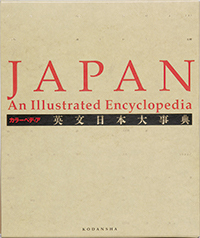
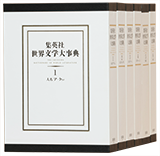
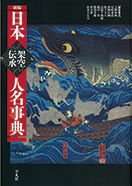
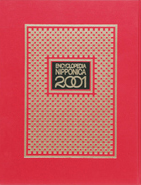
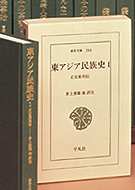
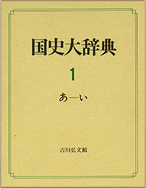
©2025 NetAdvance Inc. All rights reserved.